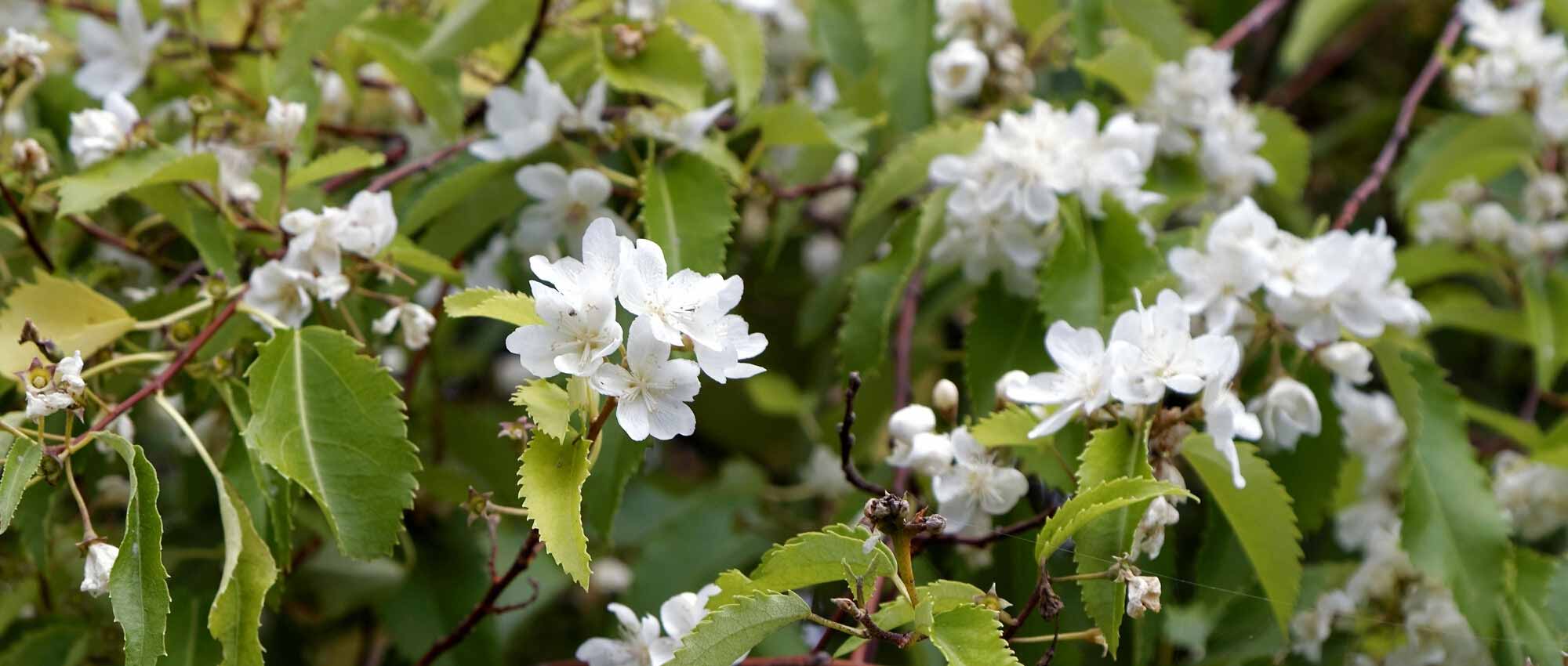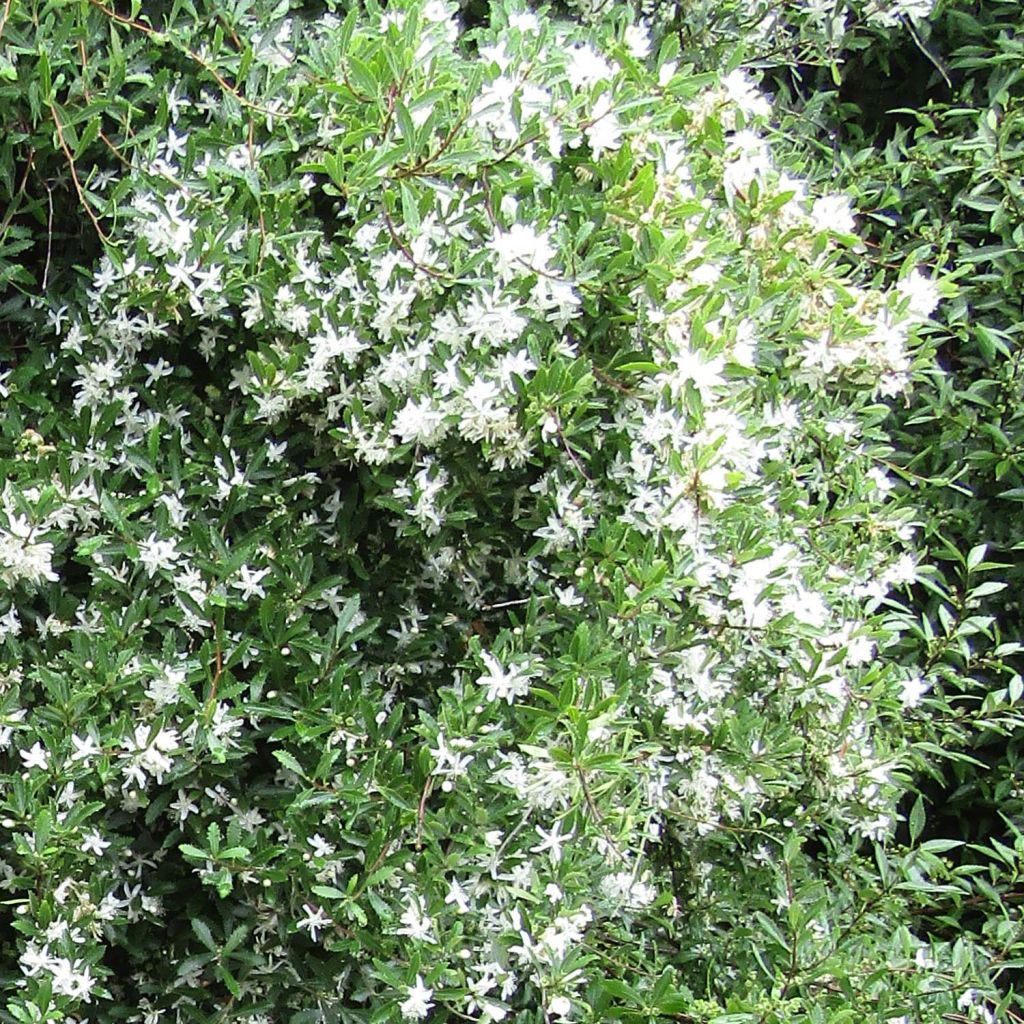

Hoheria sexstylosa Snow White
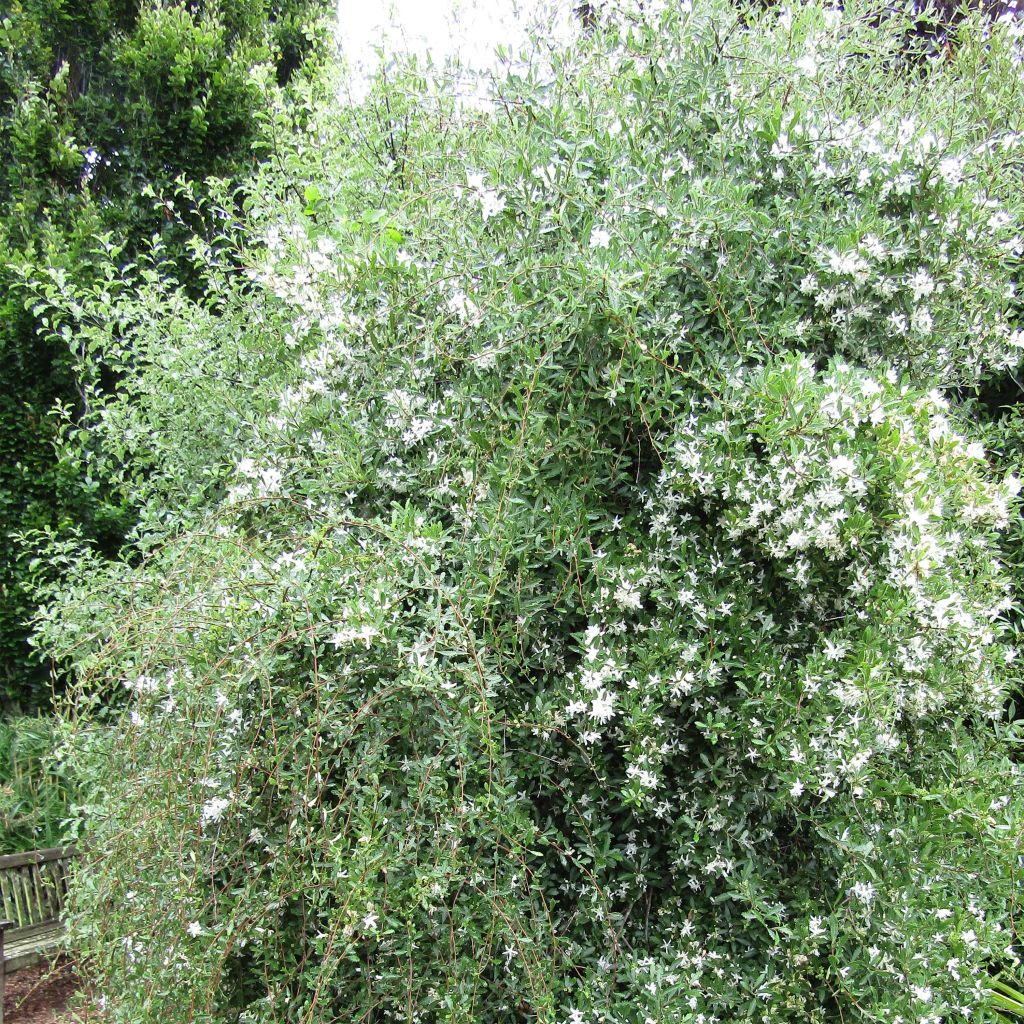

Hoheria sexstylosa Snow White
Hoheria sexstylosa Snow White
Hoheria sexstylosa Snow White
Ribbonwood
Special offer!
Receive a €20 voucher for any order over €90 (excluding delivery costs, credit notes, and plastic-free options)!
1- Add your favorite plants to your cart.
2- Once you have reached €90, confirm your order (you can even choose the delivery date!).
3- As soon as your order is shipped, you will receive an email containing your voucher code, valid for 3 months (90 days).
Your voucher is unique and can only be used once, for any order with a minimum value of €20, excluding delivery costs.
Can be combined with other current offers, non-divisible and non-refundable.
This plant carries a 24 months recovery warranty
More information
We guarantee the quality of our plants for a full growing cycle, and will replace at our expense any plant that fails to recover under normal climatic and planting conditions.
Would this plant suit my garden?
Set up your Plantfit profile →
Description
The Hoheria sexstylosa 'Snow White' is a stunning and rare cultivated bush, particularly well adapted to coastal areas, where it appreciates the mildness and humidity. It is valued for its dazzling pure white summer flowering, which is slightly fragrant and covers its vegetation at a time of year when few bushes are in bloom. With a narrow yet graceful habit, adorned with flexible branches that dance in the wind, and often with beautiful shiny foliage that is evergreen primarily, it remains lovely even in winter.
Relatively hardy and tolerant of sea spray, and with fast growth, this Hoheria makes an excellent free or flowering hedge in coastal areas. The Hoheria sexstylosa is a bush belonging to the large family of Malvaceae, and it is a cousin of hibiscus and lavateras. It is native to New Zealand, found in the North Island, in Waikato and on the Coromandel Peninsula, in the South Island, northwest of Nelson, and inland in the Marlborough and Banks provinces.
In nature, this large bush with a narrow conical habit can reach a height of 8 m (26 ft 2 in) and a spread of 4 m (13 ft 1 in), but it will not exceed 4 m (13 ft 1 in) in height and 1.50 m (4 ft 11 in) in spread in mild climate gardens. Its bark, from the age of 10 years, is adorned with very decorative ivory, brown and greenish-grey plates. Its growth is fast, and its hardiness is given, according to sources, as -15°C (5 °F) in a sheltered location.
The cultivar 'Snow White' distinguishes itself with an even more abundant flowering. Its habit is rather bushy when young, then the bush reaches up to 4 m (13 ft 1 in) in height, forming a narrow, elegant trunk carried by very flexible branches, almost weeping. The foliage of this Hoheria persists more or less throughout the year, depending on the severity of winter. It consists of entire leaves, arranged alternately, oval to lanceolate, strongly toothed along the edges. It measures about 7 cm (2.8 in) long on young plants, sometimes up to 20 cm (7.9 in) on older specimens. Their colour is a vibrant and glossy green on the upper side, more greyish on the underside.
The slightly fragrant flowering takes place in our climate in July-August for more than a month. Countless flowers are solitary or gathered in small clusters. Each flower, 3 cm (1.2 in) wide, comprises 5 pure white petals with prominent stamens arranged in a star shape. After flowering, which is very popular with pollinating insects, fruits develop as brown and winged capsules. They contain seeds that spread easily. The 'Snow White' Hoheria will thrive in a relatively humid and not-too-cold climate in any well-drained, acidic, neutral, or even slightly limestone soil.
This plant grows well by the coast and inland in sheltered locations. It is graceful and can be planted alongside other plants like serviceberries, Fothergilla, Prunus or Tetrathodium daniellii. It can be planted at the seaside with tamarisks, Griselinia, tall Olearia, and New Zealand myrtles to form a large windbreak hedge. Plant it at the edge of a large alley in front of a screen of more towering trees or a free hedge.
Hoheria sexstylosa Snow White in pictures
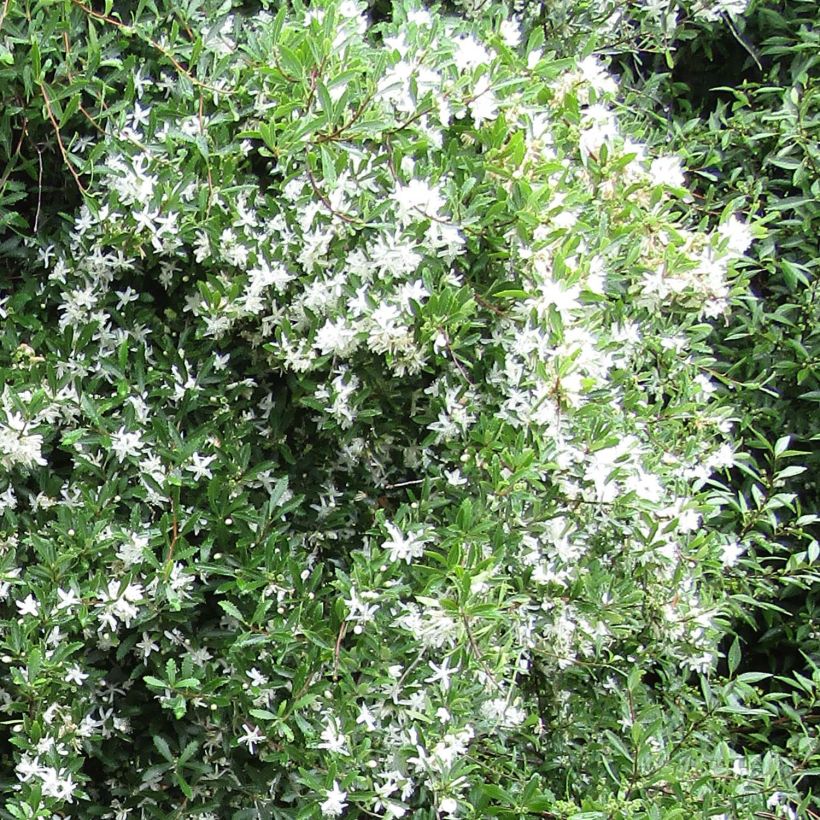

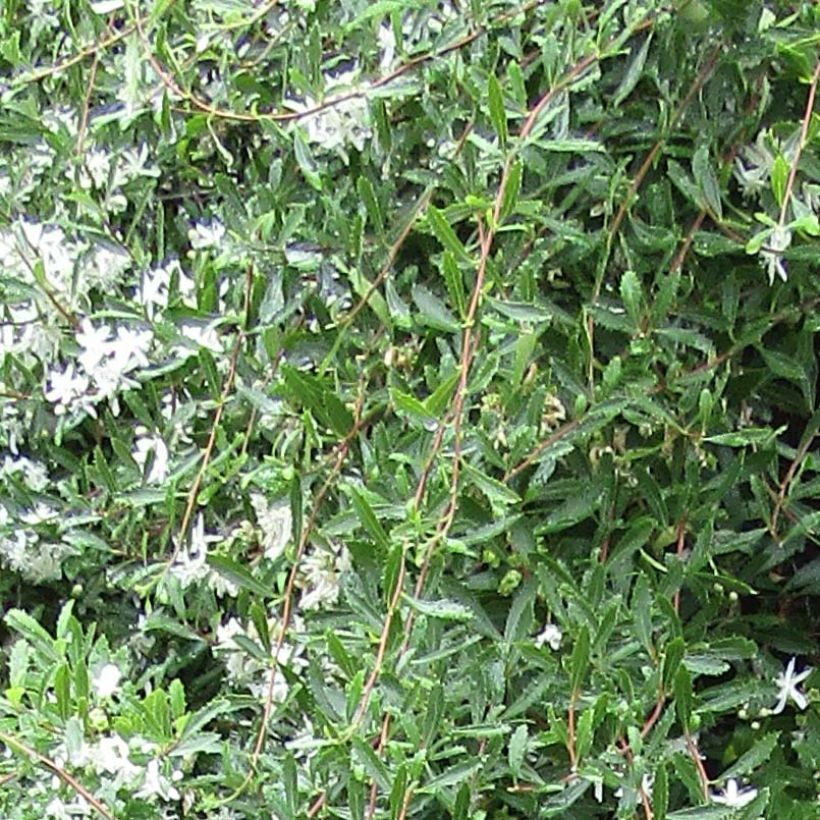

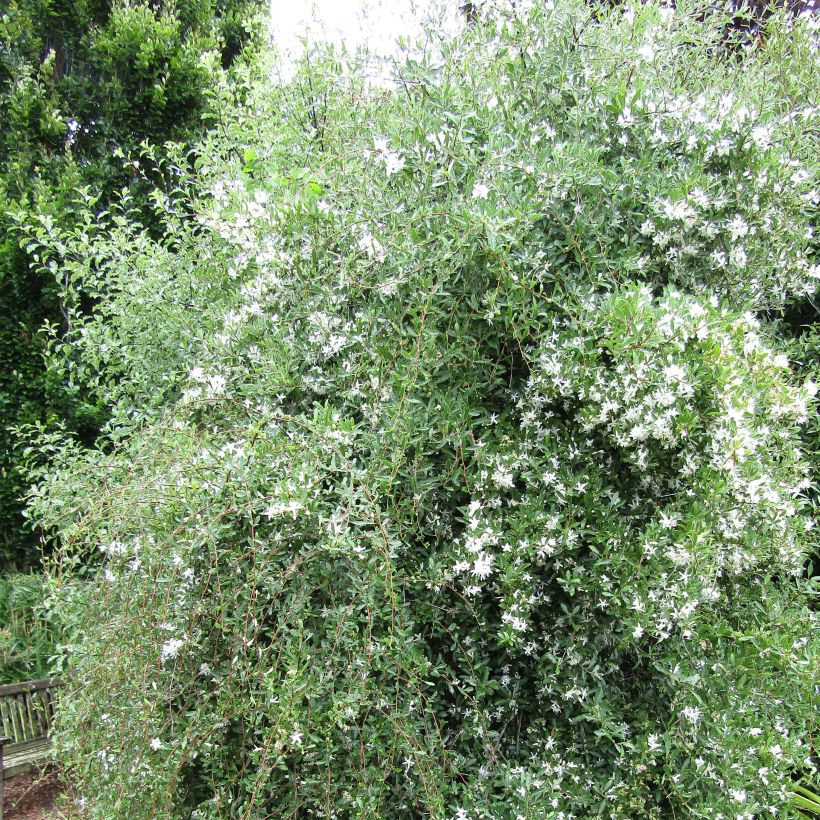

Plant habit
Flowering
Foliage
Botanical data
Hoheria
sexstylosa
Snow White
Malvaceae
Ribbonwood
Oceania
Planting and care
To plant the Hoheria Snow White successfully, choose a mild spring or early autumn climate and a sunny or partially shaded location, depending on your region. The plant prefers well-drained soil that is deep, loose, and slightly acidic to neutral, but it can tolerate sandy and poor soil. Avoid soil that retains too much moisture in winter, harming the plant's hardiness. It thrives in cool soil during summer and in a humid environment.
When planting, dig a deep hole and add leaf compost and coarse sand to improve soil quality—water generously after planting and during the first two summers, especially during abnormal drought conditions. If sheltered, the plant can withstand temperatures down to -15°C (5°F). If the branches freeze, the plant will often produce new shoots in the spring.
The Hoheria Snow White is typically left alone by pests, slugs, and snails. However, coral disease or rust may affect the plant if grown in a confined and poorly ventilated area, so ensure proper ventilation.
Planting period
Intended location
Care
Planting & care advice
This item has not been reviewed yet - be the first to leave a review about it.
Haven't found what you were looking for?
Hardiness is the lowest winter temperature a plant can endure without suffering serious damage or even dying. However, hardiness is affected by location (a sheltered area, such as a patio), protection (winter cover) and soil type (hardiness is improved by well-drained soil).

Photo Sharing Terms & Conditions
In order to encourage gardeners to interact and share their experiences, Promesse de fleurs offers various media enabling content to be uploaded onto its Site - in particular via the ‘Photo sharing’ module.
The User agrees to refrain from:
- Posting any content that is illegal, prejudicial, insulting, racist, inciteful to hatred, revisionist, contrary to public decency, that infringes on privacy or on the privacy rights of third parties, in particular the publicity rights of persons and goods, intellectual property rights, or the right to privacy.
- Submitting content on behalf of a third party;
- Impersonate the identity of a third party and/or publish any personal information about a third party;
In general, the User undertakes to refrain from any unethical behaviour.
All Content (in particular text, comments, files, images, photos, videos, creative works, etc.), which may be subject to property or intellectual property rights, image or other private rights, shall remain the property of the User, subject to the limited rights granted by the terms of the licence granted by Promesse de fleurs as stated below. Users are at liberty to publish or not to publish such Content on the Site, notably via the ‘Photo Sharing’ facility, and accept that this Content shall be made public and freely accessible, notably on the Internet.
Users further acknowledge, undertake to have ,and guarantee that they hold all necessary rights and permissions to publish such material on the Site, in particular with regard to the legislation in force pertaining to any privacy, property, intellectual property, image, or contractual rights, or rights of any other nature. By publishing such Content on the Site, Users acknowledge accepting full liability as publishers of the Content within the meaning of the law, and grant Promesse de fleurs, free of charge, an inclusive, worldwide licence for the said Content for the entire duration of its publication, including all reproduction, representation, up/downloading, displaying, performing, transmission, and storage rights.
Users also grant permission for their name to be linked to the Content and accept that this link may not always be made available.
By engaging in posting material, Users consent to their Content becoming automatically accessible on the Internet, in particular on other sites and/or blogs and/or web pages of the Promesse de fleurs site, including in particular social pages and the Promesse de fleurs catalogue.
Users may secure the removal of entrusted content free of charge by issuing a simple request via our contact form.
The flowering period indicated on our website applies to countries and regions located in USDA zone 8 (France, the United Kingdom, Ireland, the Netherlands, etc.)
It will vary according to where you live:
- In zones 9 to 10 (Italy, Spain, Greece, etc.), flowering will occur about 2 to 4 weeks earlier.
- In zones 6 to 7 (Germany, Poland, Slovenia, and lower mountainous regions), flowering will be delayed by 2 to 3 weeks.
- In zone 5 (Central Europe, Scandinavia), blooming will be delayed by 3 to 5 weeks.
In temperate climates, pruning of spring-flowering shrubs (forsythia, spireas, etc.) should be done just after flowering.
Pruning of summer-flowering shrubs (Indian Lilac, Perovskia, etc.) can be done in winter or spring.
In cold regions as well as with frost-sensitive plants, avoid pruning too early when severe frosts may still occur.
The planting period indicated on our website applies to countries and regions located in USDA zone 8 (France, United Kingdom, Ireland, Netherlands).
It will vary according to where you live:
- In Mediterranean zones (Marseille, Madrid, Milan, etc.), autumn and winter are the best planting periods.
- In continental zones (Strasbourg, Munich, Vienna, etc.), delay planting by 2 to 3 weeks in spring and bring it forward by 2 to 4 weeks in autumn.
- In mountainous regions (the Alps, Pyrenees, Carpathians, etc.), it is best to plant in late spring (May-June) or late summer (August-September).
The harvesting period indicated on our website applies to countries and regions in USDA zone 8 (France, England, Ireland, the Netherlands).
In colder areas (Scandinavia, Poland, Austria...) fruit and vegetable harvests are likely to be delayed by 3-4 weeks.
In warmer areas (Italy, Spain, Greece, etc.), harvesting will probably take place earlier, depending on weather conditions.
The sowing periods indicated on our website apply to countries and regions within USDA Zone 8 (France, UK, Ireland, Netherlands).
In colder areas (Scandinavia, Poland, Austria...), delay any outdoor sowing by 3-4 weeks, or sow under glass.
In warmer climes (Italy, Spain, Greece, etc.), bring outdoor sowing forward by a few weeks.






























